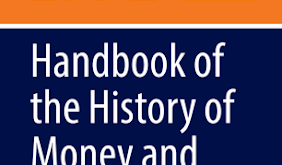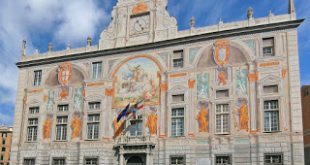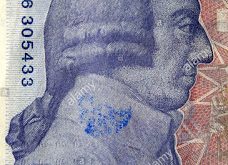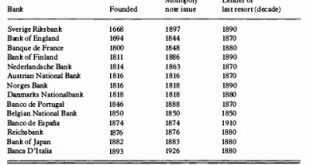The Handbook (subscription required) has been edited by Stefano Battilossi, Youssef Cassis and Kazuhiko Yago. It has many interesting chapters. Barry Eichengreen writes on what determines that a currency is used as an international currency (or even as the predominant currency). While he follows conventional views in suggesting that role of money as a means of exchange and the importance of the country in international transactions, he does also explore the role of power (military power)...
Read More »Classical Political Economy and the Evolution of Central Banks
Casa di San Giorgio, an early central bank? Paper presented twice is now published in the RRPE. It tries to bring the surplus approach tradition ideas to discuss the historical origins and the definition of what a central bank is and should do.From the abstract: The paper analyzes briefly the changing ideas on the role of money and banks from William Petty to Thomas Tooke, including the works of Adam Smith, David Ricardo, and Karl Marx. It analyzes the role of ideas in shaping the...
Read More »Classical Political Economics and the History of Central Banks
As promised not long ago, here a short paper on the history of central banks presented at ASSA meeting in Philadelphia. The paper is short, given the submission policy. It discusses the growing literature on the origins of central banks, and essentially disagrees with Charles Goodhart, who is the authority on the topic.The conventional argument is that central banks only become effectively central banks in the late 19th century when a concern with financial stability was developed and...
Read More »Adam Smith on the origins of first generation public banks
I discussed in a previous post the reasons why the Bank of England is considered a central bank, but not its precursors. I did not pay enough attention in that post to the reasons for which the early public banks were created. Adam Smith discussed that in his magnum opus. From the Wealth of Nations: “The currency of a great state, such as France or England, generally consists almost entirely of its own coin. Should this currency, therefore, be at any time worn, clipt, or otherwise...
Read More »History of Central Banks Tutorial – Before Central Banks II
As promised, one more installment on the history of central banks, and why the early Italian (and Spanish and Dutch) public banks were not seen as central banks. We must start with Italian banking. Even though the Medici Bank is probably the most well-known of the Italian banks of the Renaissance period the two key cities to understand the development of modern banking, and the precursors of central banks, are Genoa and Venice. And as noted before, central to the story is the emergence of...
Read More »History of Central Banks Tutorial – Before Central Banks
Central banks can be seen as the culmination of the long process of financial development in Western Europe. Starting with the Italian City States, in particular in Genoa, Venice, and Florence, followed by the Dutch Republic and finally reaching its apex with the Financial Revolution in England, to use Dickson famous expression. Many of the financial innovations pioneered in the early stages were central for the latter development of modern central banks. But, the relatively small scale of...
Read More »History of Central Banks tutorial
Next semester I'll be teaching a senior seminar on the history of central banks. The idea is to blend economic history, history of economics ideas and monetary theory in equal parts. And I decided to post on some of the topics I'll discuss in the class, very much like Robert Paul Wolff's tutorials in his blog The Philosopher's Stone, but probably in a less instructive and interesting way than the ones he posts (see this multi-part tutorial on Marx that starts here, and continues here and...
Read More » Heterodox
Heterodox





